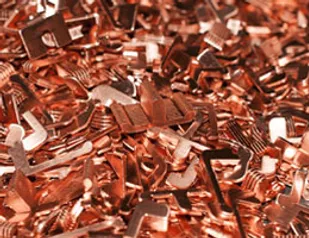Brass recycling is part of the sustainable management of metal throughout its production stage. It turns waste into valuable resources as industries develop and the demand for this recycled metal continues to grow. We will look in this blog at the brass scrap metal recycling process step by step, discuss the current market value, and include common places where brass scrap could be found.
Table of Contents
ToggleWhat is Brass?
Brasses are copper-zinc alloys with a characteristic yellow-gold color. These alloys possess an outstanding resistance to corrosion. Due to excellent machinability, excellent durability, and a good acoustic property, brass is highly popular. In fact, brass is widely used in applications for:
- Plumbing Fixtures: Mixture of spigots, of spouts, and plumbing tubing.
- Brass instrumentation: including the cornet, euphonium, and more.
- Electricals. These include wirings, connectors, and junction boxes.
- Decorative Items: Necklaces, medallions, and other adornments.
Why Recycle Brass?
Recycling brass has several benefits:
- Environmental Impact: Reduces waste and conserves natural resources.
- Economic Value: Offers a profitable way to handle scrap metal, with current rates reflecting its demand.
The Brass Scrap Metal Recycling Process

- Gathering Brass Scrap
- Brass scrap can be sourced from several locations, such as construction sites and plumbing projects. The scrap brass from old appliances can also be compiled in this gathering to ensure the supply is stable for recycling purposes.
- Sorting
- Once brass scrap is acquired, it is sorted by type. This sorting includes yellow brass, red brass, etc. Sortability is determined by the percentage of brass scrap.
- Cleaning
- Cleaning This involves separating brass from as many impurities and non-metal items as possible. This is a very important step in ensuring clean brass output, which may influence the cost of brass per kg.
- Shredding
- Once cleaning is done, the brass is shredded to smaller bits. Reduction in size facilitates a better melting rate.
- Melting
- The shredded material is melted in a furnace at temperatures exceeding 1,600 to 1,800 degrees Fahrenheit. This process removes impurities, so the final product shall be pure.
- CASTING
- At this stage, molten brass is cast into molds that result in ingots easier to handle and transport. It is this particular stage which will affect the cost price of brass till now, but the quality factor would be affecting the market value.
- Distribution
- After cooling and hardening, the brass ingots are ready now for sale to manufacturers to complete yet another cycle within a circular economy.
Common Places to Find Brass Scrap
Finding brass scrap can be easier than you think. Here are some common sources:
- Plumbing Works: Brass is used in most of the old pipes, faucets, and other fixtures.
- Construction Sites: There are a lot of brass scraps produced during the construction or remodeling work.
- Old Home Appliances: Many of the old domestic appliances, such as washing machines and refrigerators, have brass fittings.
- Automobile Parts: The radiators and electrical fittings of cars are usually brass.
- Old Instruments: With time, decommissioned or broken instruments can give plenty of brass.
- There are electrical components: wires and contacts of electronic devices, where brass is commonly used.
Understanding Brass Prices
The price of brass per kilo fluctuates based on market demand, purity, and global economic conditions. As of today, the brass per kg price can vary widely, but staying updated on the current brass prices is essential for anyone involved in recycling.
- Current Market Trends: Checking the brass price today can provide insights into potential profits from selling scrap.
- Value of Brass: Understanding the value of brass helps scrap collectors and businesses make informed decisions about when to sell their materials.
Frequently Asked Questions (FAQs)
1. Average brass price per kg?
It depends upon the market situation. Let’s see the nearest recycling unit to get the best prices.
2. Where can I get my brass scrap?
Brass scrap can be obtained from plumbing projects, at various construction sites, and in old appliances. Ensure you are safe and also legal while collecting your scrap.
3. Is Brass Scrap Eco-Friendly?
Actually, recycling brass saves valuable natural resources and reduces waste in landfills. It’s going green.
4. What are the common types of brass recycled?
Yellow brass and red brass are the most common alloys recycled. Other than that, any alloy can be processed.
Conclusion
Recycling brass scrap will do you a world of good-and the pocket as well. Knowing the process, and what “the price of brass” is, can empower one to be able to maximize returns from activities undertaken. Being either a scrap dealer or just an individual looking to recycle brass, brass cost per kg and the latest market conditions will empower you to make the best of your efforts.
Call to Action
Are you ready to start recycling brass? Gather your scrap and check with local recycling centers to get the best prices! Stay informed about the market and always look for new sources of brass scrap. Remember, your efforts contribute to a sustainable future!
For the latest updates on the rate of brass scrap, consider checking local metal recycling facilities or industry news. Recycling is not just about profit—it’s about contributing to a more sustainable future.

